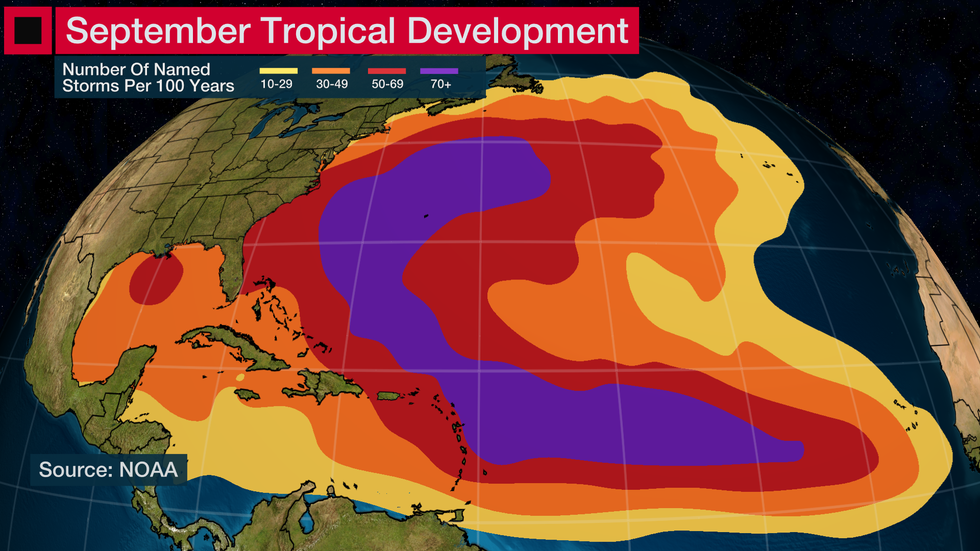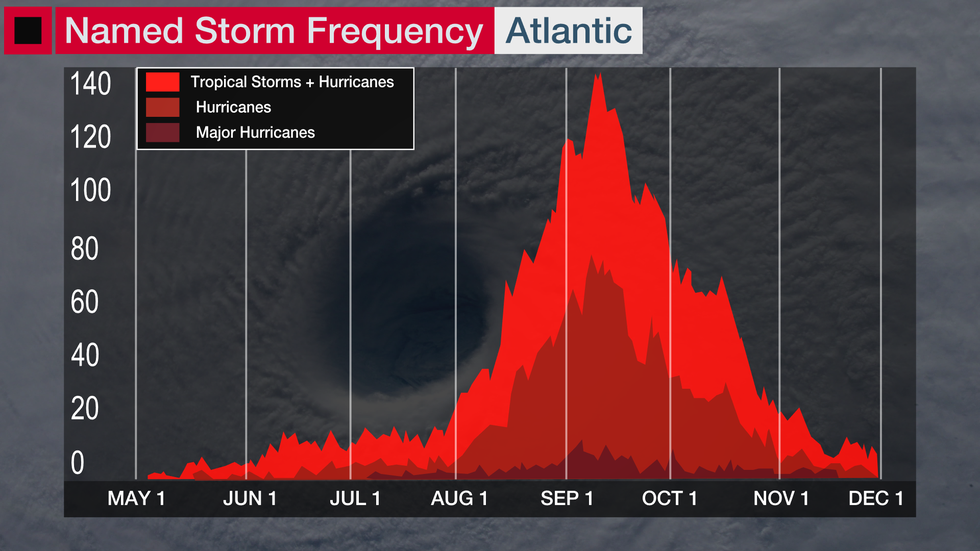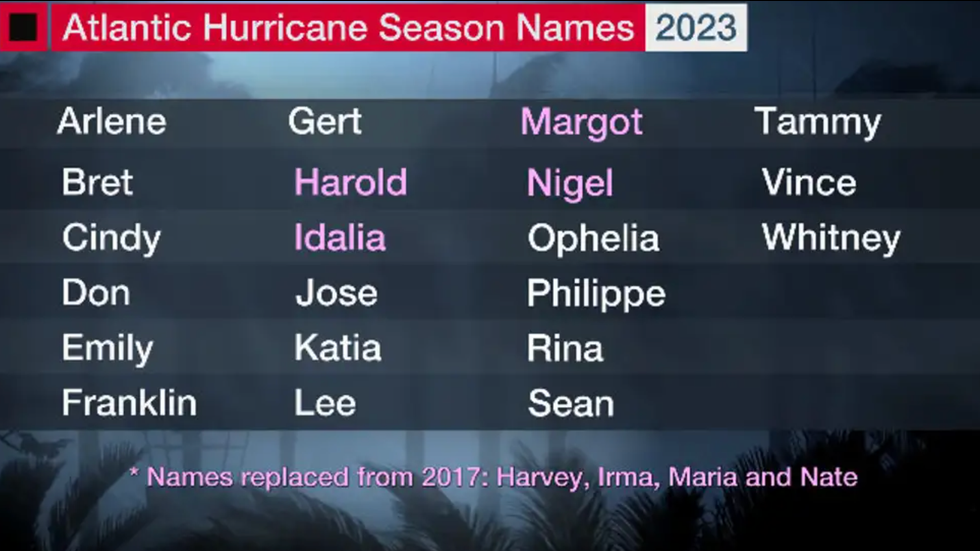Jonathan Erdman
Sunday marks the statistical peak of the Atlantic hurricane season, as Sept. 10 is when the Atlantic Basin has had the most hurricanes and named storms over the course of history.
This seasonal peak is also when conditions are most optimal for the development of tropical storms and hurricanes.
There's an overlap of favorable factors in early to mid-September, including ocean water reaching its highest temperature, the atmosphere's ability to generate thunderstorms hitting its peak, and hostile shearing winds declining to a minimum. A parade of disturbances known as tropical waves, which act as seeds for development and peak in August, are still numerous in September.
These overlapping favorable factors occur over a larger area of the Atlantic Basin compared to early and late in the season. So there's more real estate open for tropical development during the seasonal peak.

All of those factors lead to more named storms and hurricanes during the statistical peak of hurricane season, as shown in the graph below.

The graph indicates the number of active named storms and hurricanes on each day of the Atlantic hurricane season in the historical record.
It clearly shows the three-month period from August through October encompasses the majority of named storms (77%) and hurricanes (87%) in an average season.
It also shows a distinct peak day with the most active named storms and hurricanes – Sept. 10.
Colorado State University tropical scientist Phil Klotzbach said that roughly three-quarters of Atlantic hurricane seasons since 1966 have had at least one active named storm on Sept. 10. Also, half of all seasons have had at least one active hurricane on this date.
This doesn't guarantee every Sept. 10 will have a rash of Atlantic named storms.
How Much Of The Season Is Left?
The 2023 season has been near to slightly above average so far, but we're already through more than half of the name list. Hurricane Lee and Margot will likely be active through the peak of hurricane season. The next names on the list are Nigel and Opehelia.
An average hurricane season after Sept. 10 has historically produced another six named storms, including four hurricanes, two of which would reach at least Category 3 intensity.

Of course, the most important statistic is how many of these named storms and hurricanes strike land.
Later in the season, development can occur closer to land in the western Caribbean Sea, southwestern Atlantic Ocean and Gulf of Mexico. October 2018's devastating Category 5 Hurricane Michael was a stark recent example. in 2022, Hurricane Nicole struck Florida's east coast.
There's still a long way to go. In the past 10 years, the season's last storm fizzled as soon as Oct. 28 and as late as Dec. 7.
Now is the time to make sure you have a hurricane plan in case another storm threatens this season.
The Weather Company’s primary journalistic mission is to report on breaking weather news, the environment and the importance of science to our lives. This story does not necessarily represent the position of our parent company, IBM.
The Weather Company’s primary journalistic mission is to report on breaking weather news, the environment and the importance of science to our lives. This story does not necessarily represent the position of our parent company, IBM.

No comments:
Post a Comment